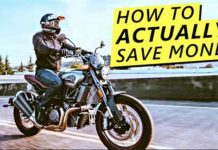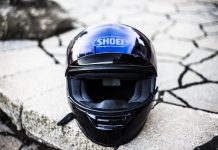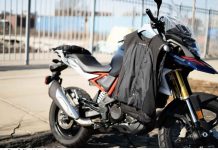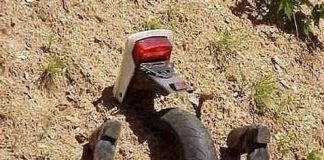 Motorcycling pleasures come in many guises. Some like to putter gently around the countryside, at very moderate speeds, enjoying the views. Some prefer long distance riding, touring, visiting far off places and even other countries. Some are interested in the sheer precision of high speed riding on sports, supersports and hyper-sports machines. No matter what one’s preference we are all bikers!
Motorcycling pleasures come in many guises. Some like to putter gently around the countryside, at very moderate speeds, enjoying the views. Some prefer long distance riding, touring, visiting far off places and even other countries. Some are interested in the sheer precision of high speed riding on sports, supersports and hyper-sports machines. No matter what one’s preference we are all bikers!
It is difficult to explore the full capabilities of a motorcycle, and of oneself as a rider, on the road. This is where the track day comes in. On the track there is no oncoming traffic, no spilt diesel, no road furniture, no pedestrians jaywalking and no law enforcement tax gatherers or speed camera lurking to catch you “speeding” and relieve you of your hard-earned cash. Usually there is just a well-surfaced, twisting, winding track with plenty of run-off area on the bends and generally a mixture of long flowing bends, uphill and downhill bits, hairpin bends and tight corners. Track days are usually well-organized and controlled with good safety equipment, medical attention (ambulances and medics) and marshals who watch for any incident or hazard and warn oncoming riders with a simple, easily remembered, flag system.
Do not think that track days are purely for the “head down bum up brigade.” Many riders of mile-munching touring machines use track days to hone their skills, learn the limitations of both themselves and their machines and give themselves the “edge” on the road. I would recommend anyone who wishes to improve their riding skills to do two or three well-organized track days a year.
Bike Preparation
It is essential that your bike is adequately prepared for a track day. Usually the documentation pack you receive when you make your booking will advise you of any special requirements such as substituting distilled water for the normal engine coolant and which, if any, nuts and bolts on the machine must be lockwired. You will also be advised if there are any noise restrictions at the track.
Many tracks have noise level restrictions and, where they are in force, your bike will be tested against pre-set noise levels – usually 95dB or 105dB – before you are allowed on track. If you have a very loud after-market “race” can on your bike you may need to either fit the original road legal silencer, or fit baffles to the race can, else you risk being refused entry onto the track.
Before your track day, make sure the bike is properly serviced.
Fresh oil, to the bike manufacturer’s specification is recommended.
Check that both oil and coolant are up to the correct levels.
If you don’t change your brake fluid regularly, then change the brake fluid before your track day. Brake fluid is hygroscopic and absorbs moisture which can boil under hard brake use and give complete brake failure just when you need them most.
Check the chain and sprockets for wear, a chain that jumps the sprocket at high speed can cause a major disaster, if it causes you to crash you could take several other riders with you. Make sure the chain adjustment is within manufacturers stated limits.
Good tires are essential, no cuts, punctures, ageing cracks or out of date tires should be entertained and there should be plenty of tread left – you could be surprised at the track day wear rate. I would also advise checking with your tire manufacturer for the recommended track day pressures. My CBR6RR, on Bridgestone BT 015Es runs 36psi front and 42psi rear on the road. On track the pressures are set to the Bridgestone recommended 34 psi front and 32 psi rear.
Check all visible nuts and bolts to make sure they are not working loose. Fairing fixing bolts can often work loose and it is worth while covering them with squares of gaffer tape to prevent them dropping onto the track if they do work free.
None of the above is overly time consuming and can be easily spread over a couple of days or so. It could mean the difference between an enjoyable day or a disappointing one.
Riding gear
Most tracks, certainly in the UK, insist on a minimum standard of riding gear for track day use. Expect to be required to wear an approved full-face helmet – in the UK it must carry an EU approval sticker. Normally leathers are required, either one piece or two piece “zip together.” Some tracks require zip-together leathers to have a full 360 zip; some will accept a shorter zip. Boots should be motorcycling specific and should provide good protection for shins and ankles in the event of a spill. Gloves should be leather, preferably armoured, and designed to protect the hands, wrist and knuckles. Most sportsbike riders will already have this equipment but for those who do not, some track day organisers are able to hire suitable gear for the day.
Supplies and essentials
The amount of supplies and essential items that can be taken to the track depend on whether you are riding your bike to the track or taking it on a trailer. If possible visit the track and check out what facilities are available. Consider the suggestions below:
Gasoline – will your track have gas available on site, is there a gas station nearby, or will you need to take your own supply? You need to check this out well in advance.
Tools/Consumables – as a minimum, zip ties, pliers, spanners, gaffer tape, thin baling wire, if possible a battery powered drill and a few small drill bits, (for drilling holes in damaged plastic to enable wiring together) tire pump and tire pressure gauge.
Food – Is food available on site? If not take a pack up of light food such as salad and pasta. Burgers and fast food are not the ideal for track days as they dull reactions and reduce concentration levels. Pasta is ideal.
Water – whatever you do, do not go without water supplies unless you can guarantee availability on site. I recommend at least half a litre per session on track.
At the track
I would always recommend getting to the track early. This will give you time to find out where everything is and reduce any stress levels.
Sign in and get all the paperwork out of the way as soon as possible.
Find out what time the briefing is and where it is being given.
Relax.
Check your bike over quickly, oil, coolant, tires, chain, just a confirmatory visual check.
Reduce your tire pressures to the recommended track pressures.
Attend the Briefing
At the briefing you will be given all the essential facts for the day. Any special factors to be observed will be detailed and a full briefing will be given on the various flags that will be used round the track by the marshals. These are to an international standard and each flag, and the way in which it is waved, has a specific meaning. They are simple to remember and should cause no concern. If you have any questions, ask! Do not feel that others may think your question silly, do not have any doubts about the interpretation of the facts you have been given.
If you are a complete novice, or are nervous about going on track for the first time, ask one of the instructors to shepherd, and advise, you for the first session. It can be a little nerve-racking, at first, when more experienced riders come past at forty or fifty mph faster than you are going. This help has been available at every track session I have been to.
The first on-track session
So, you have the right riding gear. Your bike has been nicely prepped. You have had your briefing and asked all the questions you needed answered. You have been allocated your “group,” with whom you will be riding during each session.
Now you are waiting in the paddock for your first session – relax, relax, relax.
Usually an instructor leads the way, during the first three laps or so, of the first session. Use this time to get the feel of the bike on the track, learn which way the track unfolds and, by following the instructor learn the lines round each particular corner. Soon the time will come when the instructor pulls off the circuit and waves you all on. Relax, relax, relax.
Make sure you allow your tires at least two laps to get up to temperature – temperature = grip. Too much throttle on cold tires can spit you off very easily.
Don’t try to ride too fast in the first couple of sessions, get to learn the track and the smoothest line through each of the bends. On the first track day of the season I usually take until the third or fourth session getting up to speed. That is my speed, not the speed of the guy who has passed me at 150 mph when I’m at 130 mph. Whatever you do, do not, repeat, do not, ride outside of your comfort zone. Get all your gear changing and braking done before you enter the bend. As you learn the track and get smoother, understand the braking points, turn-in points and the apexes and which gear to be in for each corner you will find that you are gradually getting quicker and quicker as your comfort zone expands. In time you will be able to brake deeper into the bends and corner harder with increasing confidence. Take your time and if you are not enjoying yourself you are probably trying too hard and trying to go too fast. If you have any worries, find one of the instructors and ask for guidance – it is what they are there for after all.
After each session make sure you drink plenty of water. Track riding uses a lot of physical and mental effort and it is easy to get dehydrated. Sip water steadily between session. Also, after each session, check your bike over for loose nuts and bolts, chain tension and oil and water levels.
At lunchtime, forget the burgers, hot dogs, and fry-ups. Stick to things like pasta and salad – if they are good enough for one Valentino Rossi they should be good enough for you. Greasy food makes one sluggish and slows down one’s reactions, the last thing you want on track.
After your track day
Put your tires back to road pressure. Pack your kit up slowly. Make sure you don’t leave anything behind.
Back on the road, whether on the bike or in your car, keep an eye on the speedo – after a day on the track 75-85 mph can seem very slow. You will have had a mentally and physically exhausting day so make allowances for tiredness.
After your track day, check the bike over thoroughly ready for road use.
Start planning your next track day!










Sadly I do not possess the physique of the young lad on the right. Think more Peter Ustinov in his role as Hercule Poirot.
Ken is that you on the right?
Great article, Ken!
All riders should do at least on track day, in my opinion. As you note, it’s not about going fast; it’s about learning more about yourself as a rider and about your bike’s capabilities. I personally believe I have become a better (safer) street rider because of my track day experiences.